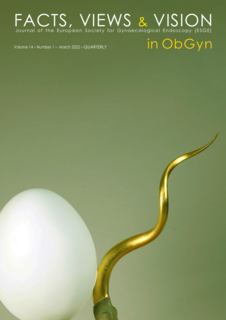The first European gynaecological procedure with the new surgical robot Hugo™ RAS. A total hysterectomy and salpingo- oophorectomy in a woman affected by BRCA-1 mutation
HUGO RAS, total hysterectomy, robotic surgery
Published online: Apr 04 2022
Abstract
Background: The benefits of minimally invasive surgery are well known in gynaecology. Robotic-assisted surgery has gained widespread acceptance within the surgical community and seems to be the most rapidly developing sector of minimally invasive surgery.
Objectives: This video shows the salient steps of total hysterectomy with new robotic technology, Hugo™ RAS. The objectives were to introduce and demonstrate the feasibility, efficacy, and safety of this new advanced device.
Material and Methods: A sixty-two years-old woman affected by BRCA-1 mutation underwent the first European gynaecological surgical procedure using the new surgical robot Hugo™ RAS in the Division of Gynecologic Oncology, Fondazione Policlinico Universitario A. Gemelli IRCCS, Rome, Italy.
Main Outcomes measures: Docking and operative times.
Results: The docking time was 6 minutes and the total operative time was 58 minutes. There were no system errors and faults in the robotic arms. The surgeon found no friction or rasping in the arms. The estimated blood loss was 30 mL. No intraoperative complications were recorded.
Conclusion: Gynaecological surgery with Hugo™ RAS seems feasible, safe and effective as shown by initial experiences in urological surgery. A larger case series would confirm the current experience and determine whether this technology could offer any additional benefit.
Video scan (read QR)
https://vimeo.com/688801633/a39465e360




